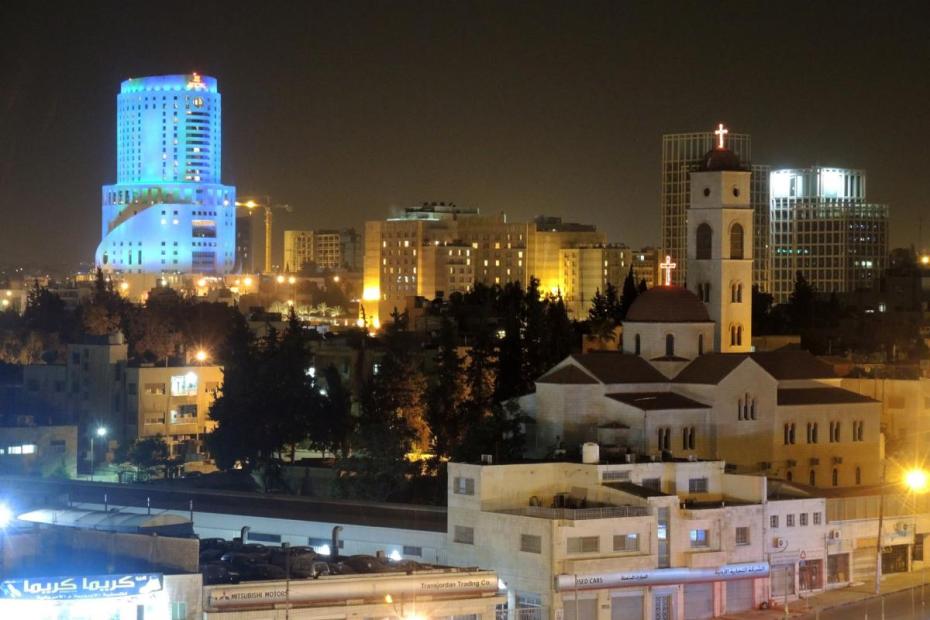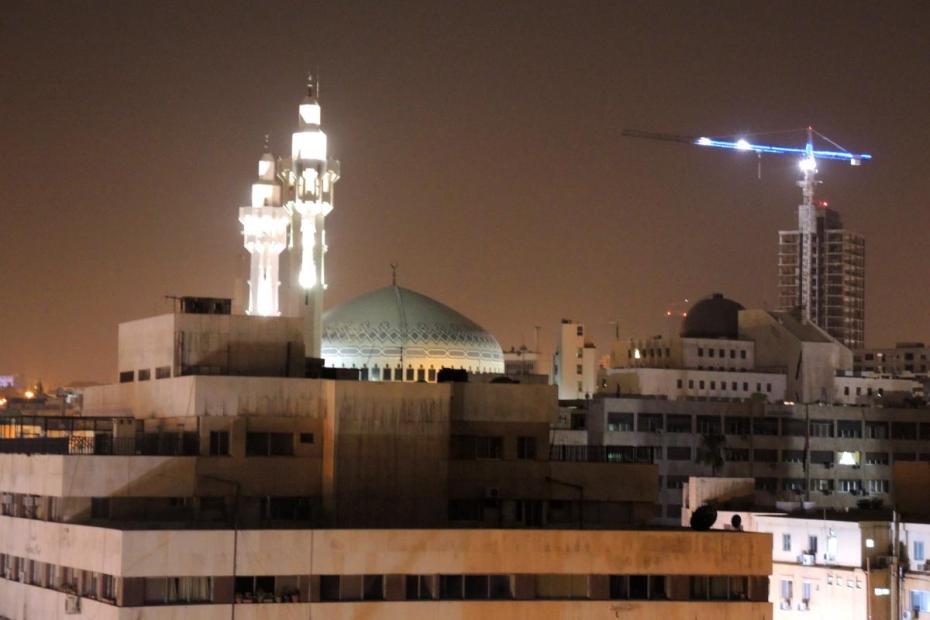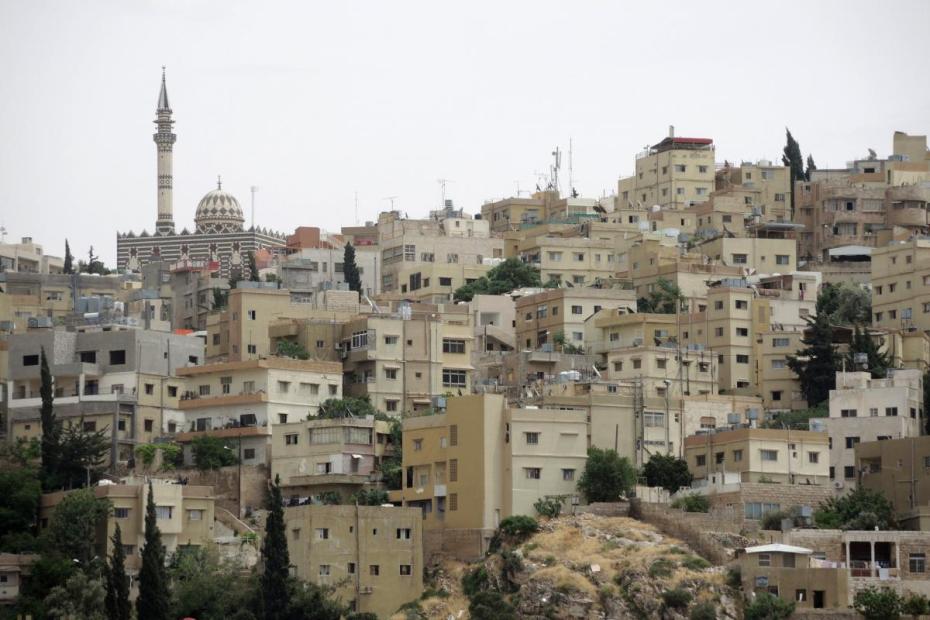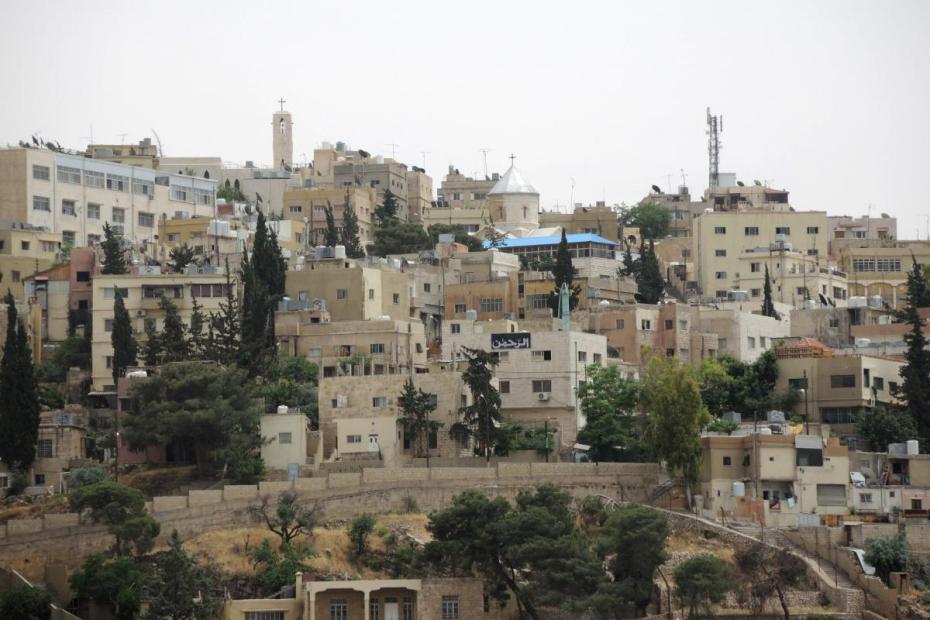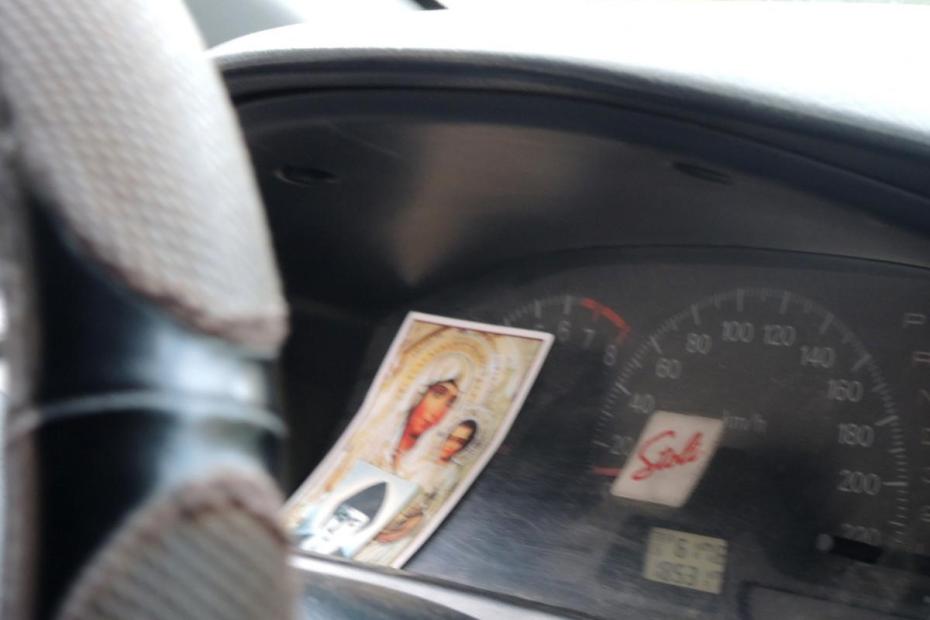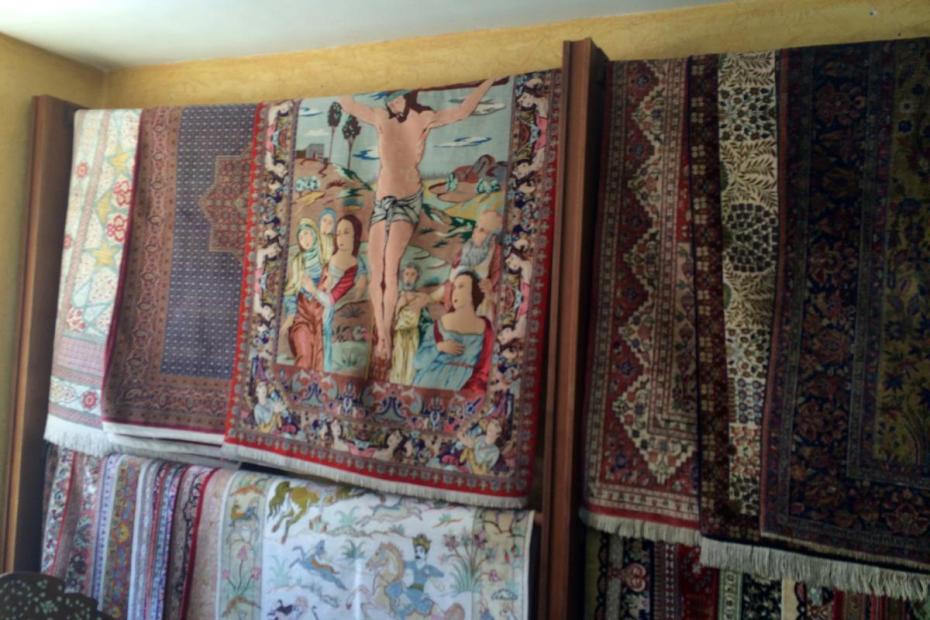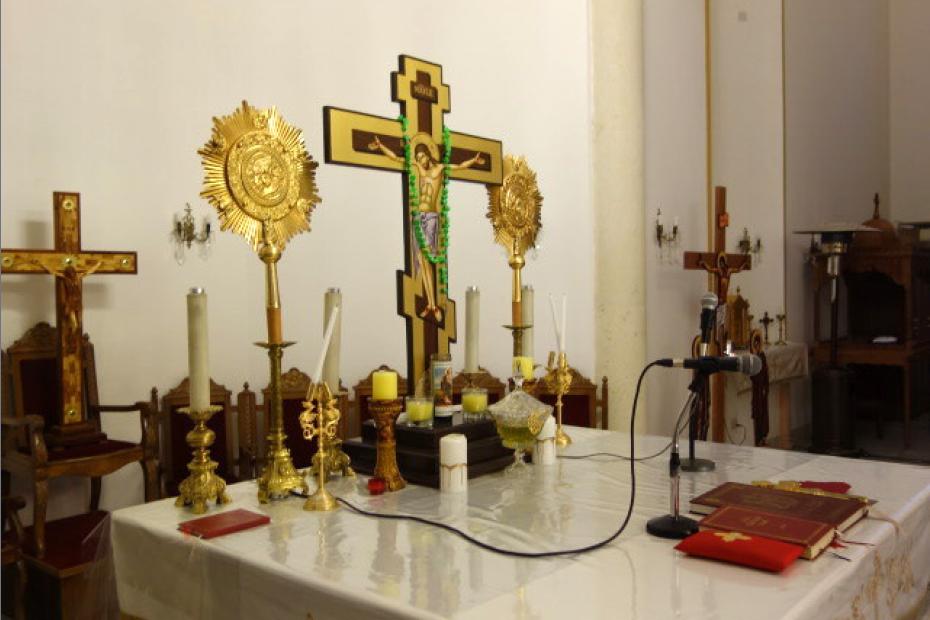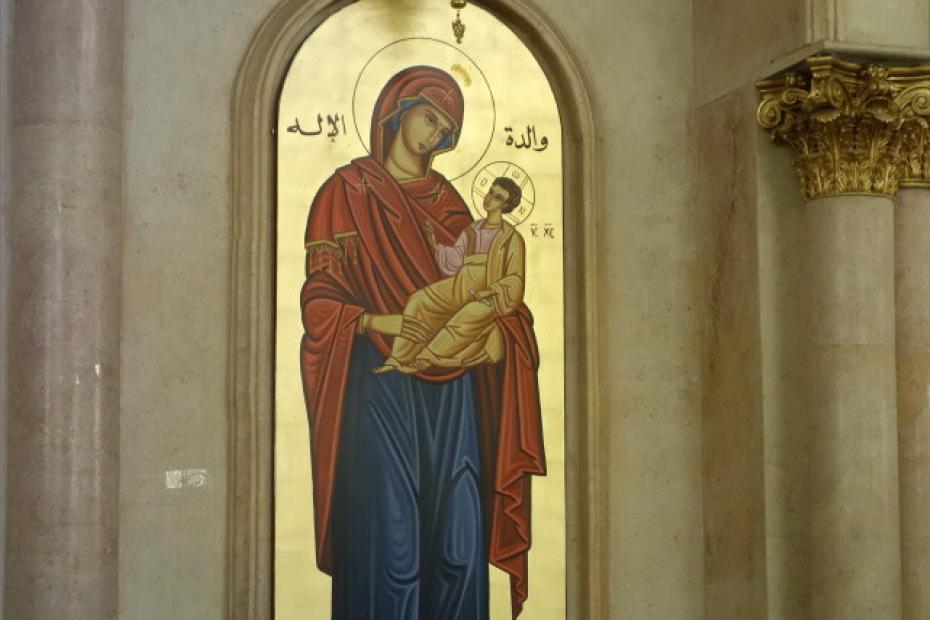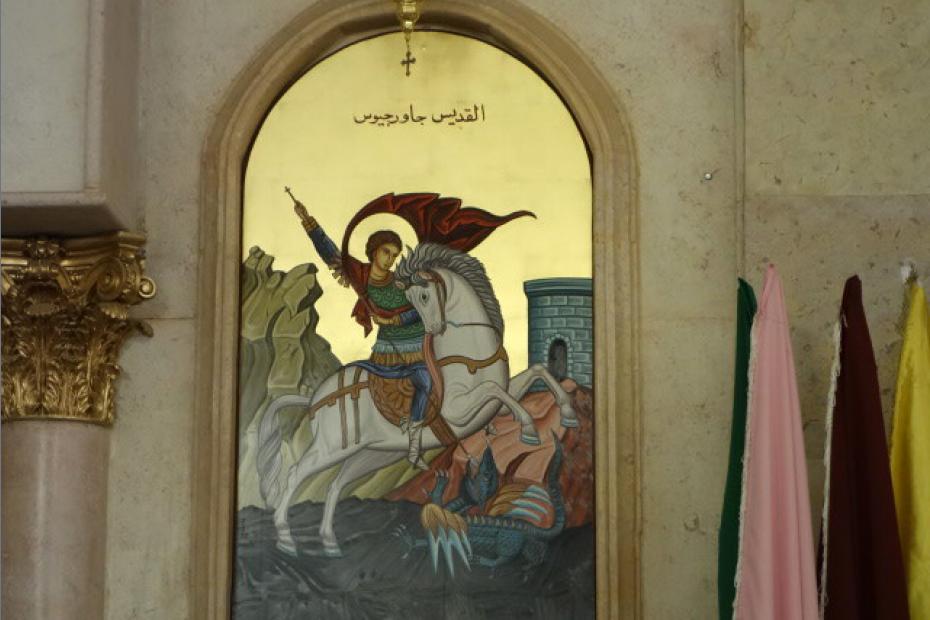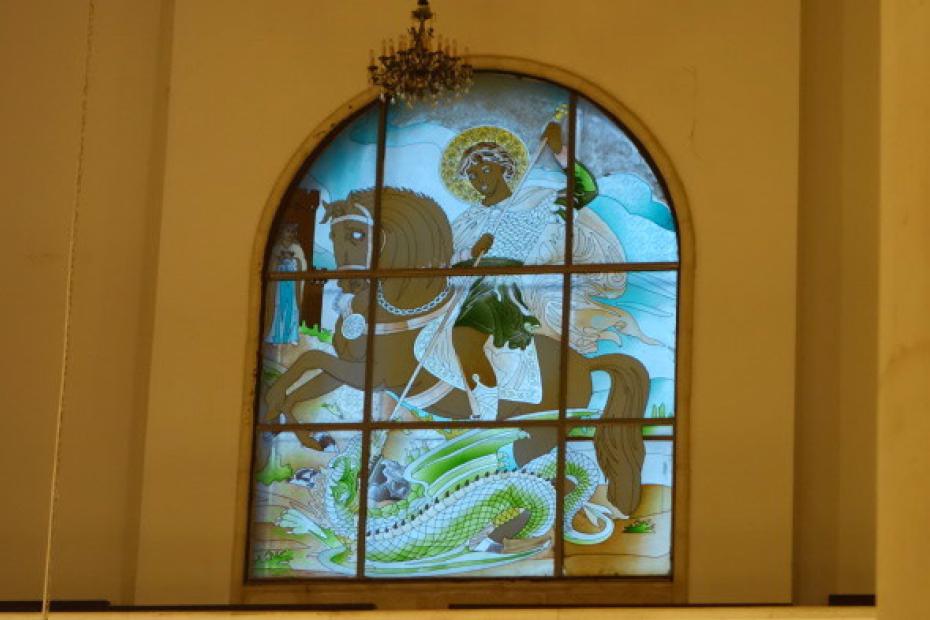Islam opposes the representation of the divine in religious art, so a good deal of the visual culture in Jordan is represented through architecture and design, rather than images. Christian Jordanians, however, do display religious images in public, and are not prevented from doing so. Many women do so discreetly by wearing a gold or silver cross, but other kinds of religious images are commonly for sale in shops that sell to both Christians and Muslims. In general, Jordanian norms emphasize modesty, not flashiness or bright colors (though there are brightly lit exceptions on the skyline of Amman).
Churches, both Orthodox and Catholic, have a relatively prominent place on the skyline of Amman. There are at least two ancient religious sites—a mosque and a church—in downtown Amman, but in almost every other instance, churches and mosques are modern buildings that update the ancient mosque and church forms of the region. Christian buildings are either domed or 1960s modern. Despite migration from the region, churches continue to be built and remodeled. The Melkite Cathedral was built in 2005.
Perhaps in deference to the Muslim culture of Jordan, most churches tend to reserve their iconography and images for the interior, though this style is in keeping with many other churches in the Byzantine world. Churches and mosques alike tend to be built of tan-pink stone commonly referred to as Jerusalem limestone. Christian images tend to be either Byzantine in style, in terms of mosaics, or to reflect indigenous culture through the choice of woods and through carpets and mosaics as media.
Icons play a major role in the visual culture and spiritual life of Melkite Catholics here.
